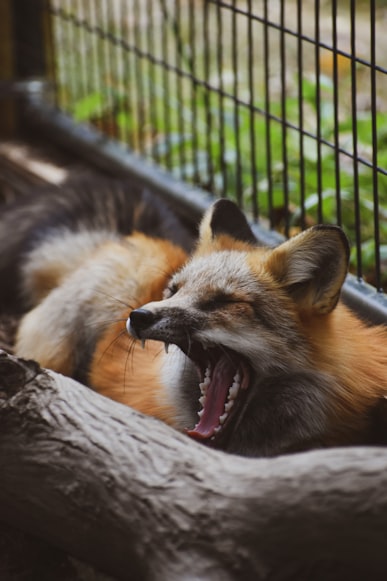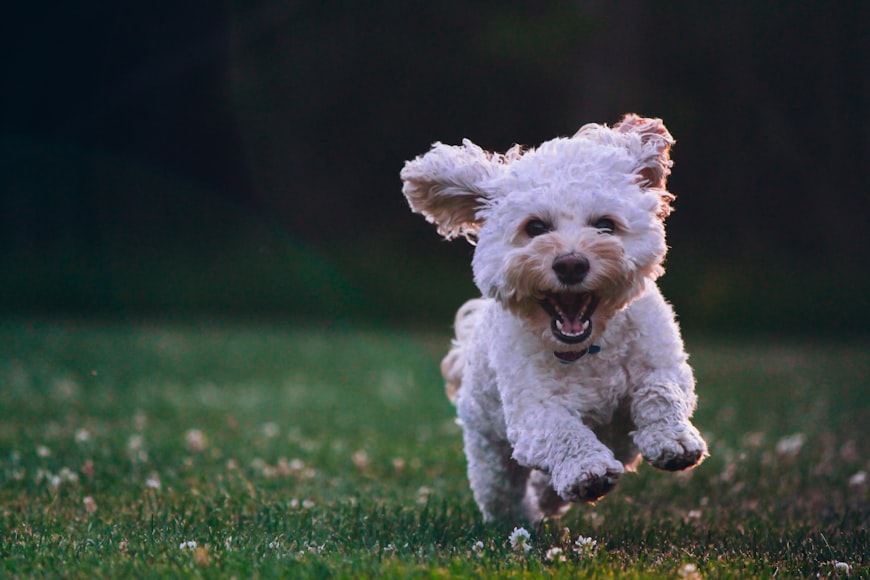Native Dog: An Outline

Introduction
Native dogs, also known as pariah dogs or village dogs, are a unique and fascinating group of canines that have evolved alongside humans for thousands of years. These dogs are found throughout the world, and they play an important role in the lives of their human companions. This outline provides an overview of the rich history, behavior, and characteristics of native dogs, exploring their origins, behaviors, and cultural significance.
History and Origins
- Origins of native dogs: Domesticated from wolves approximately 15,000 years ago
- Spread with human migration throughout the world
- Adapted to a wide range of environments and cultures
Physical Characteristics
- Size and appearance: Vary greatly depending on the breed, but typically medium-sized and lean
- Coat: Short, medium, or long, in a variety of colors
- Ears: Pricked, semi-pricked, or floppy
- Tail: Can be carried high or low, curled or straight
Behavioral Traits
- Intelligence: Native dogs are known for their problem-solving abilities and adaptability
- Socialization: Highly social and form strong bonds with humans
- Independence: Can be independent and self-reliant when necessary
- Communication: Use a variety of vocalizations, body language, and gestures
- Hunting and scavenging: Many native dogs retain their inherent hunting and scavenging instincts
Cultural Significance
- Companionship: Native dogs have been valued as companions and working partners for centuries
- Guardianship: Used for protection and guarding of property and livestock
- Hunting and scavenging: Assisted humans in hunting and provided a food source
- Cultural symbols: In many cultures, native dogs are associated with specific deities or traditions
Breeds of Native Dogs
- Indian Pariah Dog
- African Village Dog
- Australian Dingo
- Canaan Dog
- Carolina Dog
Care and Training
- Nutrition: Native dogs require a balanced diet that meets their specific needs
- Exercise: Regular exercise is essential for their physical and mental well-being
- Training: Positive reinforcement and socialization are key to successful training
- Health: Native dogs are generally healthy, but regular veterinary care is recommended
Challenges
- Abandonment and neglect: Some native dogs face challenges due to abandonment or neglect
- Lack of recognition: Native dogs are often overlooked in favor of purebred breeds
- Conservation efforts: Some breeds of native dogs are endangered and require conservation measures
Conclusion
Native dogs are a remarkable and diverse group of canines that have played a significant role in human history. Their adaptability, intelligence, and strong bonds with humans make them invaluable companions and partners. As we continue to learn more about these fascinating creatures, it is important to recognize their cultural significance and work to preserve their unique breeds.
Introduction

Introduction
In the tapestry of our canine companions, native dogs stand out as threads that connect us to our past, present, and future. These ancient breeds, indigenous to specific regions of the world, have evolved over millennia to play vital roles in human lives. From hunting and guarding to companionship and spirituality, native dogs embody the rich diversity of our shared history.
Definition and Characteristics
Native dogs are breeds that have developed naturally within a particular geographical region, without significant human intervention. They possess unique adaptations that enable them to survive and thrive in their local environments. Common characteristics include:
- Robust physiques and muscular build
- Thick coats suited to varying climates
- Strong prey drives and hunting instincts
- Protective and territorial behavior
- Social and pack-oriented nature
Historical Significance
Native dogs have played a crucial role in human history. They have been our hunting partners, our protectors, and our companions in exploration and colonization. Their abilities have shaped our cultures, myths, and traditions.
For example, the Dingo of Australia is believed to have arrived with the first human settlers over 4000 years ago. These dogs have become an integral part of Aboriginal culture, serving as hunting tools and providing spiritual guidance.
Similarly, the Siberian Husky in northern Eurasia evolved alongside nomadic reindeer herders. Their exceptional endurance and cold tolerance made them invaluable for pulling sleds and hunting in harsh conditions.
Cultural Importance
Native dogs are not merely animals but symbols of our cultural heritage. They represent the bond between humans and the natural world and embody the values and traditions of the communities they belong to.
In many indigenous cultures, native dogs are revered as sacred beings. They are featured in rituals, ceremonies, and folklore. For example, the Xoloitzcuintli in Mexico is believed to have healing powers and is associated with the Aztec god of fire.
Conservation and Preservation
Many native dog breeds today face threats from habitat loss, cross-breeding, and genetic erosion. It is essential to conserve and preserve these unique animals for future generations. Efforts include:
- Establishing breeding programs
- Promoting responsible ownership practices
- Educating the public about the importance of native dogs
- Protecting their natural habitats
Examples of Native Dogs
The world is home to a wide variety of native dog breeds, each with its own distinctive characteristics. Some notable examples include:
- Dingo (Australia)
- Canaan Dog (Israel)
- Siberian Husky (northern Eurasia)
- Xoloitzcuintli (Mexico)
- Carolina Dog (eastern United States)
- Indian Spitz (India)
- Thai Ridgeback (Thailand)
Benefits of Native Dog Ownership
Owning a native dog can be a rewarding experience. These dogs are typically intelligent, loyal, and protective. They possess a strong sense of independence and are well-suited to outdoor activities.
However, it is important to note that native dogs can be challenging pets. They may require more exercise, stimulation, and training than other breeds. It is essential to research thoroughly and consider your lifestyle before adopting a native dog.
Conclusion
Native dogs are living treasures that embody the rich diversity of our shared history and culture. Preserving and promoting these ancient breeds is not only a matter of animal welfare but also a way to connect with our past and protect our cultural heritage. By embracing the unique qualities of native dogs, we celebrate the enduring bond between humans and nature.
History and Origins

Native dogs, also known as landraces or pariah dogs, have a rich and enigmatic past that spans thousands of years. Their distinct characteristics, ancient lineage, and cultural significance make them fascinating subjects of research and companionship.
Origins and Ancestry
Native dogs are believed to have evolved from wolves during the Pleistocene era, approximately 15,000 to 40,000 years ago. They are closely related to modern wolves and share many similarities in their DNA and genetic makeup. However, over time, domestication and isolation led to the development of distinct breeds with unique traits.
Spread and Distribution
Native dogs have been found in various regions around the world, including Africa, Asia, Australia, and the Middle East. They were likely brought to these regions by humans as they migrated and established settlements. Over time, these dogs adapted to their local environments and developed specific traits to suit their needs.
Characteristics and Adaptations
Native dogs are renowned for their resilience, independence, and adaptability. They typically possess lean and muscular builds, allowing them to navigate rugged terrain and hunt effectively. Their coats vary depending on their region, with some breeds having thick double coats for insulation in cold climates and others having short, smooth coats for maneuverability in warmer environments.
Cultural Significance
Native dogs have played a crucial role in the lives of human civilizations throughout history. They have been used for hunting, companionship, transportation, and protection. In some cultures, native dogs are considered to be sacred or possess spiritual significance. In Australia, for example, the Dingo is an iconic symbol of the country’s indigenous culture.
Modern Breeds
Today, there are numerous recognized breeds of native dogs that have been bred from their ancestral populations. Each breed has its own unique characteristics and origin story. Some popular examples include:
- Australian Dingo: A medium-sized, feral dog found in Australia and New Guinea.
- Basenji: A breed from Africa known for its distinctive wrinkle-free coat and “yodeling” vocalizations.
- Carolina Dog: A small, coyote-like dog found in the southeastern United States.
- Thai Ridgeback: A breed from Thailand characterized by a narrow ridge of hair along its back.
- Xoloitzcuintli: A hairless breed from Mexico, valued for its warmth and companionship.
Conservation and Preservation
As urbanization and habitat destruction threaten native dog populations, conservation efforts have become increasingly important. Many organizations are working to preserve the genetic diversity and cultural significance of these ancient breeds. By raising awareness, supporting research, and protecting their habitats, we can ensure the survival of these fascinating and irreplaceable creatures.
Conclusion
Native dogs are a testament to the long and complex relationship between humans and animals. Their ancient lineage, distinct characteristics, and cultural significance make them an integral part of our collective heritage. Through understanding and preserving their history and origins, we can appreciate the beauty and diversity of these extraordinary companions.
Physical Characteristics

Native dogs, remnants of ancient canine lineages, exhibit a captivating array of physical characteristics that embody the genetic legacy of their deep-rooted history. These unique breeds, often adapted to specific environments and cultural practices, showcase a tapestry of forms, sizes, and temperaments.
Size and Weight
Native dogs vary significantly in size and weight. Small breeds, such as the Chihuahua or the Xoloitzcuintli, typically weigh less than 10 pounds and stand only a few inches tall. Medium-sized breeds, like the Akita or the Shiba Inu, range from 20 to 50 pounds in weight and are usually around 15 to 20 inches in height. Large breeds, such as the Newfoundland or the Great Dane, can weigh over 100 pounds and may stand more than 30 inches tall.
Body Shape and Proportion
The body shape and proportion of native dogs also vary widely. Some breeds, like the Greyhound, have slender, streamlined bodies built for speed and agility. Others, such as the Bulldog or the Pug, possess short, stocky frames with broad chests and short legs. The Labrador Retriever, a sporting breed, typically has a well-balanced, athletic physique with a strong, muscular body.
Coat Texture and Color
Native dogs exhibit a remarkable range of coat textures and colors. Short-haired breeds, such as the Doberman Pinscher or the Rottweiler, have coats that lie close to the body and require minimal grooming. Long-haired breeds, like the Afghan Hound or the Tibetan Mastiff, possess flowing, luxurious coats that may require frequent brushing and maintenance.
The color of native dogs is equally diverse. Some breeds, such as the Dalmatian, have distinctive spotted coats, while others, like the Black Russian Terrier, have solid-colored black coats. Bi-colored and multi-colored coats are also common.
Facial Features
The facial features of native dogs often reflect their ancestral heritage and adaptation to specific environments. Breeds with elongated muzzles, such as the Borzoi or the Saluki, were originally bred for hunting and tracking. Short-muzzled breeds, like the Bulldog or the Pug, were developed as companion animals and may have been selected for their ability to breathe well despite their flat faces.
Ears and Tails
The ears of native dogs can also vary in shape and size. Some breeds, such as the German Shepherd or the Australian Shepherd, have pointed, erect ears that provide enhanced hearing. Others, like the Basset Hound or the Bloodhound, have long, floppy ears that may trail close to the ground.
Tails range from short and docked to long and flowing. Some breeds, like the Siberian Husky or the Akita, have bushy, curled tails that provide warmth in cold climates. Others, like the Doberman Pinscher or the Boxer, have naturally short tails that may be cropped for aesthetic or functional purposes.
Conclusion
The physical characteristics of native dogs are a testament to the incredible diversity and adaptability of the canine species. From small, delicate breeds to large, powerful animals, each native dog embodies a unique combination of traits that reflects its ancient lineage and evolutionary journey. These characteristics not only contribute to the aesthetic appeal of these remarkable breeds but also provide insights into their history, behavior, and the complex relationship between humans and their canine companions.
Temperament and Behavior

Native dogs, also known as landraces or pariah dogs, are free-ranging canines that have adapted to specific geographical regions over centuries. Unlike domesticated breeds, they exhibit a wide range of temperaments and behaviors that reflect their unique heritage and survival instincts.
General Temperament
Native dogs are typically known for their:
- Alertness: They are highly attuned to their surroundings and quick to respond to stimuli.
- Independence: They have a strong sense of self-reliance and are not overly dependent on humans.
- Adaptability: They are highly resilient and can survive in a variety of environments.
- Intelligence: They are intelligent and problem-solvers, but they may not be as easily trainable as domesticated breeds.
Specific Breeds
The temperament and behavior of native dogs vary significantly depending on the breed. Here are some common examples:
- Dingo (Australia): Dingos are known for their aloof and cautious behavior, but they can be loyal and protective of their pack.
- Carolina Dog (United States): Carolina Dogs are highly intelligent and independent, and they have a strong prey drive.
- Canaan Dog (Israel): Canaan Dogs are loyal and affectionate, but they can be wary of strangers and have a high-energy level.
- Thai Ridgeback: Thai Ridgebacks are known for their gentle and playful nature, but they can be territorial and protective of their family.
- Basenji (Central Africa): Basenjis are independent and aloof, but they are also highly intelligent and playful.
Common Behavioral Traits
In addition to their breed-specific temperaments, native dogs often share certain common behavioral traits, including:
- Pack Mentality: Native dogs live in social groups and value their hierarchy, although the structure may be less defined than in domesticated breeds.
- Territorial Behavior: They may be protective of their territory and resources, including food and shelter.
- Prey Drive: Most native dogs have a strong prey drive, which can be directed towards small animals or livestock.
- Scent Marking: They use urine and feces to mark their territory and communicate with other dogs.
- Howling: Native dogs often howl to communicate with their pack, especially at night or when separated.
Training and Socialization
Training and socialization are essential for native dogs, especially if they are to live in a domestic setting. However, it’s important to approach training differently than with domesticated breeds.
- Positive Reinforcement: Use positive reinforcement techniques, such as treats and praise, to reward desired behaviors.
- Consistency: Be consistent with your commands and expectations to establish clear boundaries.
- Socialization: Expose your native dog to a variety of people, animals, and environments to help them become well-rounded and comfortable in different situations.
Conclusion
Native dogs are fascinating and unique animals with a rich heritage. Their temperaments and behaviors reflect their evolutionary journey and adaptation to their native environments. While they may be more independent and require more specialized training than domesticated breeds, they can make wonderful companions for experienced dog owners who appreciate their unique qualities. By understanding their temperament and behavioral traits, you can provide your native dog with the care and environment it needs to thrive.
Habitat and Distribution
Introduction
Native dogs, also known as pariah dogs or village dogs, are free-living canids that have evolved alongside humans in various regions worldwide. These dogs exhibit remarkable adaptations to their diverse environments, reflecting their long-standing coexistence with human societies.
Habitat
Native dogs inhabit a wide range of habitats, reflecting their adaptability and resilience. They can be found in:
- Urban environments: Some native dogs have become acclimated to living in cities and towns, often scavenging for food and shelter.
- Rural communities: Native dogs are commonly found in rural areas, where they assist with hunting, herding, and pest control.
- Forests and woodlands: Native dogs can thrive in forested landscapes, utilizing their agility and keen senses.
- Deserts and semi-arid regions: Some native dogs are highly adapted to arid environments, exhibiting water-conserving mechanisms.
- Coastal areas: Native dogs living in coastal regions may rely on marine resources, such as fish and crustaceans.
Distribution
Native dogs are distributed throughout much of the world, but their populations are concentrated in:
- Asia: Native dogs are widespread in Southeast Asia, South Asia, and the Middle East.
- Africa: Native dogs can be found throughout much of Africa, including both desert and savannah regions.
- Oceania: Australia and New Guinea are home to several distinct native dog species.
- Europe: Some native dog populations still exist in Southern and Eastern Europe.
- Americas: Native dogs were once widespread in the Americas, but their numbers have declined due to factors such as disease and habitat loss.
Adaptations to Habitat
Native dogs have evolved a suite of adaptations to suit their diverse habitats:
- Physical adaptations: They may have short hair in hot regions or thick fur in cold environments, and some have highly developed senses of smell and hearing.
- Physiological adaptations: Native dogs can tolerate extreme temperatures, conserve water, and utilize a wide range of food sources.
- Behavioral adaptations: They are often highly social and cooperative, forming pack structures and cooperating to acquire resources.
Importance of Native Dogs
Native dogs play a significant role in their ecosystems and human communities:
- Ecological roles: They suppress rodent populations, assist in pollination, and disperse seeds.
- Cultural significance: Native dogs are often deeply ingrained in local cultures, symbolizing loyalty, protection, and companionship.
- Tourism potential: Native dogs can be a draw for wildlife enthusiasts and tourists interested in experiencing local culture.
Conservation
Despite their hardiness, native dog populations face challenges such as habitat destruction, disease, and persecution. Conservation efforts are essential to ensure the survival of these unique and valuable animals. These efforts include:
- Habitat protection: Preserving and restoring native dog habitats is crucial for their long-term survival.
- Vaccination and disease control: Reducing the spread of diseases is essential to protect native dog populations.
- Sterilization and population management: Controlling the size of native dog populations can help mitigate human-wildlife conflicts.
- Community outreach and education: Raising awareness about the importance of native dogs and promoting their welfare is essential for their conservation.
Conclusion
Native dogs are remarkable animals that have adapted to a diverse range of habitats throughout the world. They play important roles in their ecosystems and human communities. Understanding their habitat and distribution is essential for their conservation and well-being, ensuring their continued existence for generations to come.
Hunting Skills and Native Role
Native dogs, also known as pariah dogs or free-ranging dogs, are distinct canine populations that have adapted to living in various environments without significant human intervention. These dogs possess remarkable hunting abilities and have played a crucial role in indigenous cultures worldwide.
Hunting Skills
Native dogs have evolved exceptional hunting skills that enable them to survive in the wild and provide sustenance for their packs. These skills include:
- Scenting: Native dogs possess an acute sense of smell that allows them to detect prey from afar. They can track prey over long distances and locate hidden animals.
- Tracking: These dogs are skilled at following prey footprints or other signs, enabling them to pursue their quarry relentlessly.
- Agility: Native dogs are incredibly agile and can navigate rough terrain with ease. They are often adept at climbing trees and swimming to reach their prey.
- Endurance: Native dogs have remarkable stamina and can hunt for hours, even in harsh conditions. Their ability to conserve energy allows them to pursue prey until exhaustion.
- Cooperation: Some native dog breeds exhibit cooperative hunting behaviors, working together to surround or corner prey. This coordinated approach enhances their success rate.
Native Role
In indigenous cultures, native dogs have played a vital role, contributing to the livelihoods and well-being of their human companions. Their hunting skills have been essential for:
- Food: Native dogs provide a reliable source of meat for indigenous communities. They hunt a variety of animals, including rodents, rabbits, deer, and wild boar.
- Pest control: These dogs help control rodent populations, which can damage crops and spread diseases. Their presence in and around settlements also deters larger predators.
- Companionship: Native dogs are often highly social and form strong bonds with their human families. They provide security, companionship, and emotional support.
- Trade: In some cultures, native dogs were traded for goods or services, such as food, tools, or weapons. Their hunting abilities and loyalty made them valuable assets.
- Cultural significance: Native dogs hold cultural and spiritual significance in many indigenous communities. They are often regarded as protectors, guides, or symbols of good fortune.
Specific Examples
Various native dog breeds have specialized hunting skills that are adapted to their specific environments. A few examples include:
- African Basenji: Known for its hunting prowess in dense forests, where its agility and keen hearing allow it to track prey through thick undergrowth.
- New Guinea Singing Dog: A unique breed that uses cooperative hunting techniques to surround and capture prey in mountainous terrain.
- Dingo: A wild dog native to Australia, renowned for its endurance and ability to hunt kangaroos and other large animals.
- Canaan Dog: Originating in the Middle East, this breed exhibits exceptional hunting skills against rodents and smaller game, using its sharp eyesight and quick reflexes.
Conservation Concerns
Native dog populations are facing threats due to habitat loss, hybridization with domestic dogs, and persecution. Preserving these unique breeds is important for maintaining cultural heritage and biodiversity. Conservation efforts focus on habitat protection, responsible breeding, and educating indigenous communities about the value of native dogs.
Conclusion
Native dogs are remarkable creatures with exceptional hunting skills that have played a crucial role in indigenous cultures for centuries. Their abilities to track prey, navigate diverse terrain, and cooperate have made them invaluable companions for human communities. Understanding and preserving these unique breeds is essential for appreciating the rich cultural heritage and biodiversity of our planet.
Conservation Status and Threats
Introduction
Native dogs, including breeds such as the Australian Dingo and the New Guinea Singing Dog, are unique and endangered species facing various threats to their survival. This article explores the conservation status, threats, and ongoing efforts to protect these iconic canine companions.
Conservation Status
Most native dog species are listed by the International Union for Conservation of Nature (IUCN) as vulnerable or critically endangered. The Australian Dingo, for example, is classified as vulnerable due to habitat loss, persecution, and hybridization with domestic dogs. The New Guinea Singing Dog, on the other hand, is critically endangered due to habitat degradation, hunting, and disease.
Threats
Habitat Loss and Fragmentation: Native dogs require vast, undisturbed habitats for hunting and breeding. As human settlements and infrastructure expand, their habitats are being fragmented and lost, leading to population decline and genetic isolation.
Persecution: In some areas, native dogs are perceived as a threat to livestock and humans, resulting in indiscriminate killing or poisoning. This persecution further contributes to their population decline.
Hybridization with Domestic Dogs: Native dogs are naturally curious and may interbreed with domestic pets, which can introduce non-native genes into their populations and threaten their genetic integrity.
Disease Transmission: Domestic dogs can carry diseases that are often fatal to native dogs, which lack the necessary immunity. Contact between these two populations poses a significant health risk.
Hunting and Consumption: In certain regions, native dogs are hunted for their meat or fur, further exacerbating their population decline.
Conservation Efforts
Habitat Protection and Restoration: Conservation programs aim to protect and restore native dog habitats through land acquisition, conservation easements, and habitat management practices.
Public Education and Outreach: Raising awareness about the importance of native dogs and the threats they face is crucial. Public education campaigns help change attitudes towards these animals and encourage responsible stewardship.
Captive Breeding and Reintroduction: Some conservation organizations are involved in captive breeding programs to maintain genetic diversity and supplement wild populations where necessary. Reintroduction efforts aim to reestablish native dogs in areas where they have been extirpated.
Collaborations and Partnerships: Successful conservation efforts often involve collaborations between government agencies, conservation organizations, indigenous communities, and private landowners.
Conclusion
Native dogs play a vital ecological role as apex predators and seed dispersers. However, their survival is threatened by a range of factors. Conservation efforts are ongoing to address these threats through habitat protection, public education, captive breeding, and reintroduction. By working together, we can ensure the future survival of these unique and enigmatic canine companions.
Importance to Indigenous Cultures
Introduction
Native dogs, bred by Indigenous peoples over centuries, play a crucial role in their cultures, providing companionship, sustenance, and spiritual significance. This article explores the importance of these exceptional canines within Indigenous communities.
Historical Significance
Native dogs have been part of Indigenous cultures for thousands of years. Archaeological evidence suggests that they accompanied early migrations to the Americas and formed deep bonds with their human companions. They assisted with hunting, gathering, and transportation, supporting the survival and prosperity of Indigenous communities.
Cultural Symbolism
In many Indigenous cultures, native dogs hold spiritual and symbolic significance. They are often seen as guardians of their people, guiding them through both physical and spiritual realms. Dogs may also represent clan or lineage affiliations, with specific breeds associated with particular groups.
Economic Value
Beyond their cultural importance, native dogs provide economic benefits to Indigenous communities. They are used for hunting, retrieving, and transportation. Their hides, fur, and bones can also be utilized for clothing, shelter, and tools. By providing a source of food, materials, and labor, native dogs contribute to the economic stability and self-sufficiency of Indigenous tribes.
Companionship and Emotional Support
Native dogs are highly social animals that form strong attachments to their human families. They provide companionship, warmth, and emotional support, playing a vital role in the well-being of Indigenous people. In some cultures, dogs are even considered members of the extended family.
Specific Examples
The Alaskan Malamute: Bred by the Inupiat people of the Arctic, the Malamute is a powerful working dog renowned for its endurance and loyalty. It played a crucial role in hunting, transportation, and companionship.
The Navajo Churro: This ancient breed was developed by the Navajo people of the Southwest. It is known for its hardiness, versatility, and close bond with its human companions. Churros were used for herding, hunting, and providing protection.
The Australian Dingo: Believed to have arrived in Australia with Indigenous Australians, the Dingo is a highly intelligent and adaptable dog. It has cultural significance for Aboriginal people, who recognize its role as a companion, hunter, and symbol of their connection to the land.
Preservation and Recognition
In recent decades, the importance of native dogs to Indigenous cultures has gained recognition. Conservation efforts are underway to preserve these unique breeds and ensure their future in Indigenous communities. Some organizations, such as the Indigenous Dog Research and Preservation Alliance, work to promote research, education, and support for native dogs.
Conclusion
Native dogs are more than just pets; they are integral members of Indigenous cultures. They have played a vital role in history, providing companionship, sustenance, and cultural significance. By preserving and recognizing these extraordinary canines, we honor the deep connection between Indigenous peoples and their canine companions. Native dogs continue to be treasured members of Indigenous communities, strengthening the bonds that unite them and preserving a rich cultural heritage for generations to come.
Genetic Diversity and Conservation Efforts
Introduction:
Native dog breeds, with their unique genetic makeup and historical adaptations, are a valuable part of our cultural heritage and ecological balance. However, many indigenous dog populations face threats to their genetic diversity and overall survival. Conservation efforts are crucial to ensure the preservation of these irreplaceable genetic resources.
Genetic Diversity in Native Dogs:
Genetic diversity within a breed refers to the variation in genetic traits, which enables adaptation to diverse environments and disease resistance. Native dog breeds typically exhibit high genetic diversity due to their isolated origins and limited human intervention. This variation has allowed them to survive in challenging environments, from Arctic tundra to tropical rainforests.
Threats to Genetic Diversity:
Several factors jeopardize the genetic diversity of native dog breeds:
- Hybridization: Interbreeding with non-native breeds, often due to lack of breeding control, can dilute genetic diversity and lead to the loss of unique traits.
- Population Decline: Habitat loss, disease, and other factors can reduce population sizes, increasing the risk of genetic drift, where random changes in allele frequencies occur.
- Human Selection: Selective breeding for certain traits can unintentionally reduce genetic diversity by emphasizing a narrow range of genetic variations.
Conservation Efforts:
To address these threats and preserve the genetic heritage of native dog breeds, conservation efforts are imperative:
- Breed Preservation Programs: Establishing and maintaining breeding programs that prioritize genetic diversity helps to preserve endangered breeds and prevent extinction.
- Genetic Monitoring: Regular monitoring of genetic health and diversity allows breeders to make informed decisions about breeding practices and identify areas of concern.
- Public Education and Awareness: Raising awareness about the importance of native dog breeds and the need for responsible breeding practices is crucial to reduce genetic dilution.
- Habitat Protection: Ensuring adequate habitat for native dog populations is essential for their survival and genetic stability.
- Policy Development: Governments and organizations should collaborate to implement policies that promote the conservation of native dog breeds and their genetic integrity.
Benefits of Genetic Diversity:
Preserving the genetic diversity of native dog breeds offers numerous benefits:
- Adaptive Capacity: Genetic diversity enhances a breed’s ability to adapt to changing environmental conditions and disease pressure.
- Resilience: Populations with higher genetic diversity are more resilient to environmental challenges and fluctuations.
- Historical and Cultural Significance: Native dog breeds have played important roles in human history and cultural traditions, preserving their genetic diversity safeguards this cultural heritage.
- Veterinary Benefits: Understanding the genetic basis of diseases in native dog breeds aids in developing breed-specific diagnostic tools and treatments.
Examples of Conservation Success:
Several examples demonstrate the successful implementation of conservation efforts:
- Carolina Dog: A threatened wild dog breed in the southeastern United States, the Carolina Dog Conservation Project has worked to preserve its unique genetic composition.
- Xoloitzcuintle: An ancient Mexican hairless breed, the Xolo Project has focused on restoring its genetic diversity and promoting responsible breeding practices.
- Australian Cattle Dog: In Australia, the Australian Cattle Dog Federation has established a genetic database and breeding program to maintain the diversity of the breed.
Conclusion:
Genetic diversity is vital for the survival and well-being of native dog breeds. Conservation efforts involving breed preservation programs, genetic monitoring, public education, habitat protection, and policy development are essential to safeguard these irreplaceable genetic resources. By valuing and protecting the unique genetic heritage of native dog breeds, we preserve not only their physical existence but also a piece of our cultural and historical tapestry.



















